Residential vs Commercial Solar: What’s the Difference?
Solar energy has become a cornerstone of Australia’s shift towards cleaner, more cost-effective power. At Ramselec Solar, we help homeowners and businesses alike harness the benefits of solar. Yet, while the underlying technology is the same, residential and commercial solar systems differ significantly in design, scale, and application. Understanding these differences helps property owners make the right investment for their needs.
Table of Contents
2. Cost of Installation and Incentives
3. Energy Consumption and Usage Patterns
4. Installation Complexity and Permits
Key Takeaways
Residential and commercial solar vary in size and scale.
Roof space and installation methods differ between homes and businesses.
Energy usage patterns drive system design choices.
Commercial projects demand stricter compliance and engineering.
As Australia moves towards a more sustainable future, solar energy has become a popular and viable option for both residential solar panel systems and commercial properties. With the country experiencing an abundance of sunlight throughout the year, more and more homeowners and businesses are looking to solar power as a way to reduce energy costs, lessen their environmental footprint, and gain energy independence.
However, when it comes to residential versus commercial solar, there are a number of key differences that could influence your decision-making process, from system size and installation to cost, scalability, and return on investment. Understanding these differences can help you make an informed decision on choosing the which type of solar solution is right for you. Let’s break down the two in detail.
1. System Size and Scale
One of the most notable differences between residential and commercial solar installations is the size of the system.
Residential Solar: Typically, a residential solar system will range from 3kW to 10kW in size, depending on the energy consumption of the household and the available roof space. A typical Australian household might use around 15-25 kWh per day, so a 5kW system is often enough to cover most of their needs. The solar panels are usually installed on the roof, optimising space without taking up extra ground area.
Commercial Solar: Commercial solar systems, on the other hand, are much larger in scale and can range from 10kW to several hundred kW or even megawatts. These systems are designed to meet the higher energy demands of businesses, factories, or warehouses. Due to the larger surface area available on commercial rooftops or land, businesses can often install more solar panels to generate significantly more energy than a residential system would.
In terms of capacity, commercial systems are designed to offset much higher energy consumption, which makes them much more expansive and expensive to install compared to a typical residential setup.
2. Cost of Installation and Incentives
Another major difference is the cost of installation, which is largely dictated by the size of the system and the complexity of the installation.
Residential Solar: The cost for a residential solar system in Australia typically ranges from $3,000 to $10,000, depending on the size of the system, the brand of panels, and the complexity of the installation. The price can be further reduced by government rebates and incentives. The Small-scale Renewable Energy Scheme (SRES) provides financial incentives in the form of STCs (Small-scale Technology Certificates), which lower the upfront cost of installation for homeowners.
Commercial Solar: The cost for a commercial solar system can range from $10,000 for a small commercial property to hundreds of thousands of dollars for large-scale installations. However, businesses can often access additional incentives and rebates, including the Large-scale Renewable Energy Target (LRET), which helps to offset the high initial investment. Businesses can also often benefit from tax incentives, allowing for depreciation over time, which can significantly reduce the total cost of the system.
While the upfront cost for commercial solar is higher, the return on investment (ROI) is often quicker due to the larger energy savings and the fact that commercial properties generally operate for longer hours than residential homes.
3. Energy Consumption and Usage Patterns
Energy consumption patterns differ significantly between residential and commercial properties, which also influences the design and implementation of solar systems.
Residential Solar: The energy consumption in a household is typically limited to lights, home appliances, heating, and cooling, and is usually peaked during certain times of the day, such as in the mornings and evenings. Homeowners typically use less power compared to businesses, with a maximum load occurring during peak times. Therefore, residential solar systems are designed to meet these relatively small, fluctuating needs.
Commercial Solar: Commercial properties generally have a much higher energy demand, with consumption spanning longer hours and potentially larger machinery and equipment. For instance, factories, warehouses, and office buildings may have constant or high peak loads throughout the day. Commercial solar systems are designed to handle these larger, more consistent energy loads. Commercial properties may also require battery storage to store excess energy for use after hours, which can further increase the system size and complexity.
In addition to size, demand charges, the fees businesses pay for the maximum level of electricity they use, can also be offset by solar energy, making commercial installations highly cost-effective.
4. Installation Complexity and Permits
When it comes to installation, commercial systems are often more complex, and the process requires additional planning, permits, and approvals.
Residential Solar: Installation of a residential solar system is generally faster and simpler. After a consultation and a site inspection, a local installer can complete the project in as little as 1 to 2 days. Once the system is installed, it only needs to be connected to the grid and inspected by an electrician.
Commercial Solar: Installing a commercial system is far more involved. Businesses will typically need to undergo a more rigorous design phase to ensure the system can handle the business's energy consumption and integrate with any existing infrastructure. In addition to the physical installation, building permits and grid connection approvals are often required, which can extend the timeline. As commercial installations often involve much higher costs, the process also requires more detailed cost-benefit analysis and long-term energy planning.
5. Maintenance and Longevity
Both residential and commercial solar systems are relatively low-maintenance, but the maintenance demands can vary depending on the size of the system and the property it is installed.
Residential Solar: A residential system generally requires minimal maintenance. Homeowners should keep the panels clean and clear of debris, as dirt, leaves, and dust can reduce efficiency. Regular cleaning and an annual checkup are typically sufficient to maintain a residential system’s performance.
Commercial Solar: Commercial solar systems, particularly large-scale installations, may require more frequent maintenance, especially if the system is used to power critical operations. With more panels, inverters, and storage systems involved, businesses should factor in additional costs for regular monitoring, servicing, and repairs. Many commercial installations also benefit from performance monitoring software, allowing businesses to track energy output and catch any issues early on.
6. Return on Investment (ROI) and Payback Period
For both residential and commercial solar, the payback period and ROI are important considerations. However, the ROI for commercial solar tends to be quicker.
Residential Solar: The payback period for residential solar in Australia typically ranges from 4 to 7 years, depending on the system size, energy consumption, and available government rebates. After the initial investment, homeowners can benefit from lower energy bills, with many households seeing 50-90% savings on their electricity bills.
Commercial Solar: Commercial properties can see a return on investment much quicker, typically within 3 to 5 years. This is due to the higher energy usage and the fact that commercial properties can offset more significant electricity costs. Additionally, businesses often have access to more favourable financial incentives that further reduce the payback period.
Which Is Right for You?
The choice between residential and a commercial solar energy system depends entirely on your property type, energy usage, and long-term goals. Both deliver clear financial and environmental benefits. The main difference is in the degree of complexity, cost, and regulatory obligations.
Conclusion
Residential and commercial solar share the same goal: to generate clean, renewable energy. What sets them apart is size, complexity, and application. At Ramselec Solar, we deliver tailored solar solutions for households and businesses, ensuring every project is safe, compliant, and built for long-term performance. If you’re considering installing solar for your home or business, now is the perfect time to take the next step. Contact us today and speak with our team about the right solar solution for you.
FAQs:
Do commercial systems cost more?
Yes, commercial systems involve larger investments, but they also deliver greater savings and faster payback periods due to higher energy usage.
Can a residential system be upgraded to a commercial size?
Homes can expand systems within roof and grid limits, but full commercial installations require different engineering and approvals.
Do rebates apply to both residential and commercial solar systems?
Yes. Government incentives such as the Small-scale Renewable Energy Scheme support both sectors, though structures differ by project size.
How long do solar systems last?
Solar panels typically last 20–25 years, with inverters and batteries requiring replacement sooner.
Do businesses need special permits for solar installation?
Yes, larger systems often require additional grid approvals and compliance with workplace regulations.







